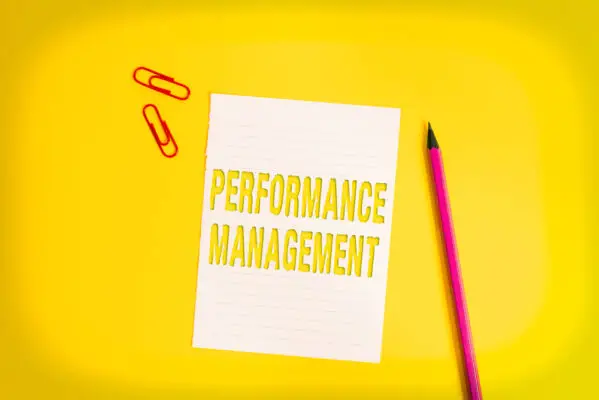Key Risk Indicators, or KRIs, are a type of metric that measures the potential of an event or activity to cause harm to an organization. They provide insight into how risk can affect your business and help you develop proactive strategies for mitigating those risks.
Through the use of KRIs, you can identify areas where your business is most vulnerable and make changes accordingly.
Key Risk Indicators (KRIs) are an essential part of the risk management process in any company. KRIs provide organizations with a way to measure and monitor potential risks, allowing them to take proactive steps to mitigate them.
Keeping organizations in compliance with operational and other risk management requirements requires re-examination periodically and regularly. This review process allows for timely reporting to top executives about critical threats.
The entire process is possible by utilizing a comprehensive awareness of risk, which can be used to identify appropriate risk indicators, ensuring consistent performance by using the key performance indicators (KPIs) key indicators.
By using KRIs, companies can identify risk areas and develop strategies to reduce or eliminate them. In this blog post, we will discuss the advantages of using Key Risk Indicators and how they can help your organization stay ahead of potential risks.
Let’s take a closer look at the advantages of key risk indicators.
Accurate Measurement of Risk Exposure
KRIs provide accurate measurements of risk exposure that enable businesses to take proactive measures to reduce or eliminate it. By monitoring KRIs, you can get real-time updates on any potential risks that could have a negative impact on your business operations.
This is especially useful in industries needing rapid response times due to sudden changes in market conditions or regulatory requirements.
Improved Decision-Making Processes
Kris also provides useful information that can be used to inform decision-making processes. Information obtained from KRIs can help organizations identify trends, anticipate future events, and make better-informed decisions about handling them.
For example, suppose an organization has identified potential risks related to a new product launch. In that case, they can use KRI data to evaluate the potential impact of those risks and determine the best course of action for mitigating them ahead of time.
Enhanced Monitoring Capabilities
Another advantage of using KRIs is that they enable organizations to monitor their risk exposure more effectively than ever before. By utilizing KRI data, organizations can quickly identify areas where risk levels may be higher than expected and take appropriate steps to mitigate those risks as soon as possible.
This helps ensure that any unexpected events don’t have too much of an adverse effect on their operations or bottom-line performance.

What Is a Key Risk Indicator?
A key risk indicator (KRI) is a metric used to measure the likelihood of an event and its consequences exceeding the organization’s risk tolerance. KRIs are used by organizations to identify, assess, monitor, and control risks that could potentially have a negative impact on the business.
KRIs provide an early warning system for potential risks and can be used to quantify and monitor changes in the levels of risk exposure. They are typically developed with three essential characteristics: measurability, quantifiability, and accuracy. These characteristics ensure that KRIs are effective in predicting potential risks.
KRIs can be used in enterprise risk management (ERM) to help organizations identify, assess, monitor, and control risks across all business areas. By developing KRIs that are tailored to their specific needs, organizations can gain insight into their current level of risk exposure and take steps to mitigate any potential risks.
Key risk indicators describe measures for predicting possible risks that could negatively affect business. They allow quantifying and monitoring the risks. Consider this a change-related indicator a shopper can use as their risk management system to help businesses identify and mitigate risk effectively.
KRI provides visibility on vulnerabilities in your company’s risk control system and processes — and helps develop a risk assessment plan to fortify your business.
What Is the Purpose of Key Risk Indicators?
Key Risk Indicators (KRIs) are indicators that help organizations measure, monitor, and identify potential risks within their operations. KRIs provide insight into an organization’s operational performance and risk exposures by tracking crucial data points such as changes in financial results or asset values, customer feedback and complaints, process cycle times, compliance violations and other external market conditions.
Organizations use KRIs to anticipate big issues before they happen by identifying early signals of risk before larger problems arise. This allows them to act quickly to prevent large-scale damage from occurring. With the right KPIs in place, businesses can make informed decisions about how best to address any risks at hand for increased efficiency throughout the company’s operations.
The purpose of KRIs is twofold: firstly, to alert you when a certain threshold has been met that indicates an increase in the likelihood of an event adversely impacting your key assets or processes; secondly, it is necessary for business continuity – protecting against irreversible damage or a total loss in case of major failures so that normal business activity can resume as quickly as possible following a crisis situation.
More specifically, some Key Risk Indicators include:
1) Customer churn rate;
2) Liquidity ratio;
3) Average daily turnover rate;
4) Volatility index;
5) Frequency of safety incidents;
6) Customer satisfaction rating;
7) frequency & severity of IT downtime incidents; 8 ) percentage overdue on accounts receivable balances; 9 ) industry regulations compliance rates; 10 ) probability & impact matrix, which uses different criteria such as time span, geographic location, and political climate.
These types of KPIs or Key Risk Indicators enable companies to keep close tabs on internal operations while having information available upfront that helps protect against major losses due to unexpected circumstances outside their control- natural disasters and economic downturns.
How Do Key Risk Indicators Help Companies Identify Emerging Risks?
In the current post-CoVID period, emerging risks continue impacting many audit risks. While government healthcare and pharmaceuticals will likely continue a focus on improving their pandemic risk assessments, some industries will focus their efforts to identify new risks within supply chains and internal controls.
KRIs are an important tool in operational risk management (ORM) and help identify and define risks so everyone is aware of their risks.

What are examples of key risk indicators (KRIs)?
The most common indicators are risk indicators for all companies. Some look at what’s going wrong with a particular industry sector; others monitor different business areas in your industry.
Financial KRIs
Quantitative financial reporting (KRIS) is more important for retail or commercial banks, asset management firms, and CPA firms if required. Among examples of KRIs involving the internal environment might be those measuring the economic slowdown and regulatory change. Some external influences may be changes in goals and budget constraints or acquisitions.
Human resources KRIs
The company monitors staff turnover and employee departure rates (the number of employees leaving their job at their own discretion and the reason for leaving).
The business could also monitor turnover of “key” workers, such as executives from highly-growth business units or those with specialist technical expertise. It’s advisable to have HR teams identify key employees and specialized skills if they cannot be replaced quickly.
How to Develop Key Risk Indicators to Fortify Your Business?
It is important for leaders and their teams to monitor their performance and ensure they meet their targets and milestones. Developing key risk indicators by looking at their dashboard, a leader can see if they have a good idea of how the situation has changed or if they have remained on track, and this is also true with KRI. When KRIs are beyond the threshold, the company warns management of the potential risk to the organization.
Identify Relevant Risks
Before you start KRI, you need to understand all the risks and weaknesses that can cause these risks. Effective enterprise risk management involves identifying key risks risks – those which are the most likely to have the most significant impact on risk events. Also, depending on the risk appetite of the organization.
Establish Your KRIs
If you have established a KPI( Key performance indicator), this will allow you to develop KRIs. What are the reasons for it? KPI is already clear and provides the data that underpins the KPI — this will decrease the time and the need.
The KPIs that are mapped to KRIs are important and timely and can easily be measured and increasing risk exposures. Unless these KPI’s become obsolete or do not apply anymore, then they cannot be used.

Conclusion
In conclusion, key risk indicators are invaluable tools for businesses looking to gain insight into their risk exposure and make better informed decisions regarding how to handle it moving forward. By monitoring KRIs closely and taking proactive measures when necessary, organizations can protect themselves from potentially damaging events while also improving their decision-making processes and overall performance levels over time. Ultimately, this means greater peace of mind for companies who invest in KRI solutions!

Chris Ekai is a Risk Management expert with over 10 years of experience in the field. He has a Master’s(MSc) degree in Risk Management from University of Portsmouth and is a CPA and Finance professional. He currently works as a Content Manager at Risk Publishing, writing about Enterprise Risk Management, Business Continuity Management and Project Management.

